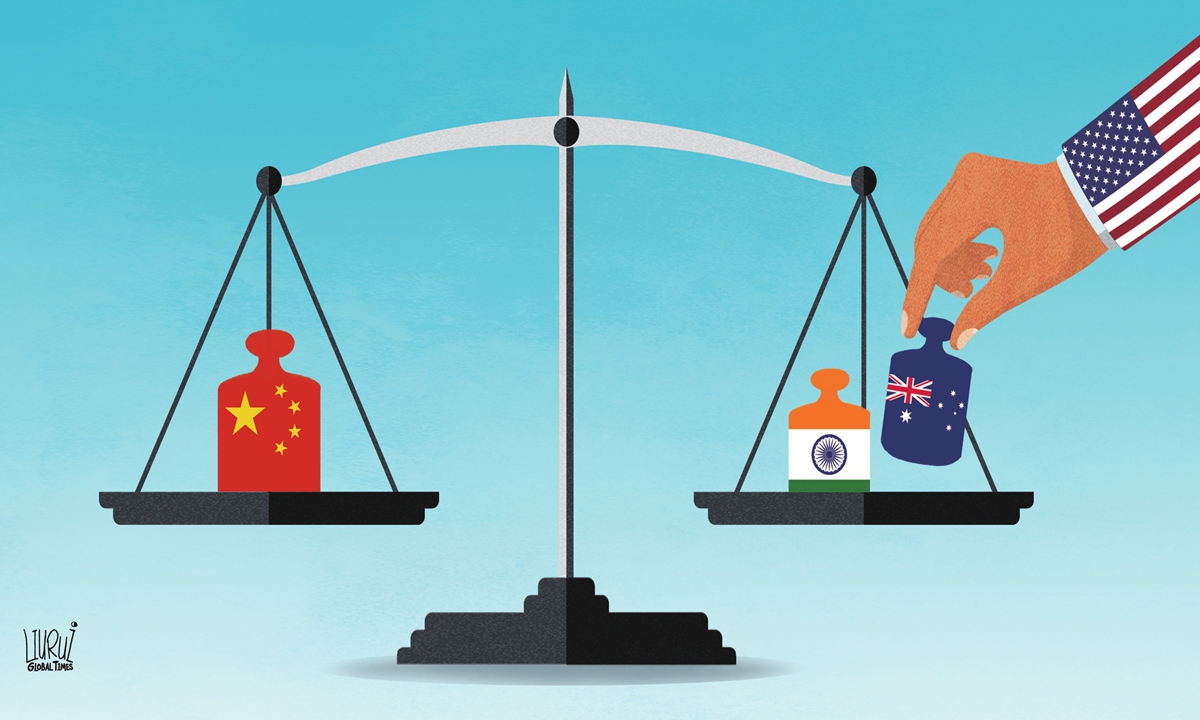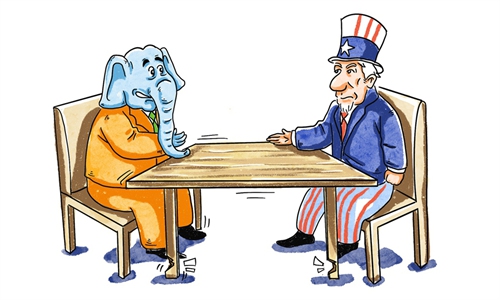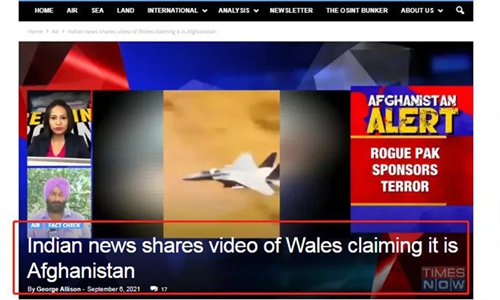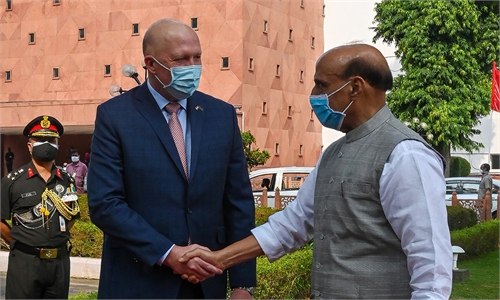
Illustration: Liu Rui/Global Times
India and Australia on Saturday held their first 2+2 Ministerial Dialogue in New Delhi. Amid the dialogue, India and Australia discussed a series of issues, such as economy, defense and intelligence cooperation. The core of the dialogue was to strengthen India-Australia cooperation in terms of defense and military matters. The talks also involved the situation in Afghanistan and other regional hotspot issues, especially their coordination under the Indo-Pacific Strategy.This move of India and Australia is actually an important step in constructing an "Asian NATO" by the US, Japan, India and Australia. In fact, the dialogue is to serve the first face-to-face summit under the Quad grouping in Washington on September 24. The 2+2 dialogue between India and Australia not only promotes bilateral strategic defense coordination, but also makes up for the weakest link of the US-led Indo-Pacific Strategy.
After the Trump administration launched the Indo-Pacific Strategy at the end of 2017 to counter China, the Quad was rejuvenated. Japan and Australia are the US' long-term allies, and have long established comprehensive communication mechanisms. With the development of the bloc, India-Australia relations are a weak link that has troubled the US. In terms of solidifying the "Asian NATO," the weak link has been India's strategic coordination with the US, Japan and Australia. They have been attempting to make up the weak link. Therefore, in 2018, the US and India embarked on their first 2+2 dialogue. Then, India and Japan held the first-ever ministerial-level 2+2 dialogue in 2019. And this time, it's the turn of India and Australia.
India-Australia relations have developed rapidly in recent years, breaking their old pattern of mutual "contempt" over the past seven decades. Amid the Cold War, India and the US were in opposite camps. As the pawn of the US, Australia had taken a particularly strong stance against India because it was closer to the Soviet Union. As a result, New Delhi did not have a positive view toward Canberra. Relations between the two were indeed frosty.
However, with the intensified strategic competition of the US against China, Canberra and New Delhi have formed a consensus on the policy of jointly containing Beijing. Australia is willing to be a US pawn to charge forward in a series of issues to discredit China. It not only vigorously advocates the "China threat theory," but also unreasonably accuses and attacks China, creating antagonism. India, on the other hand, regards the long-term competition between China and the US as a major opportunity for its own rise, and thus makes a strategic adjustment. India is shifting from pursuing a balanced diplomacy to the path of cozying up to the US to jointly contain China.
The first India-Australia 2+2 dialogue and the strengthening of their military cooperation is a big step made by the two countries in regional militarization and group formation. They are promoting the establishment of the four Quad countries' defense logistics system.
For example, New Delhi and Canberra signed the Australia-India Mutual Logistics Support Arrangement in June, 2020. This allows both sides access to each other's military bases for logistics support. On September 9, 2020, India and Japan signed an Acquisition and Cross-Servicing Agreement that would allow the militaries of the two countries to exchange supplies and services on a reciprocal basis during exercises in which both participate. In future military operations that may be aimed at China, these agreements could provide India, the US, Japan and Australia a mutual logistics supply network.
In particular, India has built a Coastal Surveillance Radar system in the Indian Ocean. By signing the White Shipping Agreement with various countries and the mutual logistics support agreements with Pacific-Indian Ocean coastal countries, setting up an information center for India' maritime domain awareness in Gurugram, all the civilian and military information in the Indian Ocean waters are under India's control.
This system has gained stronger military intelligence collecting capabilities through intelligence exchanges with the Five Eyes intelligence sharing alliance. Although India has not formally joined the Five Eyes, it has established different forms and levels of intelligence sharing with members of the group. In this regard, China must be vigilant against the future impact of intelligence sharing between India and the Five Eyes.
The author is professor with the Institute of International Studies at Fudan University. opinion@globaltimes.com.cn



